It’s essential for you to keep a good diet for your corn snake as they are voracious eaters, but there may be times when they won’t eat & that can be stressful for you.
Have you ever wondered how long it’s okay for your scaly companion to go without food?
The answer depends on age, size & health. Generally, younger snakes should have more meals than adults since their metabolism is faster.
An adult corn snake can go for two to three months without food – but the longer this period of time becomes, the more dangerous it is.
There are some common explanations for this behavior, such as:
- Cold temperatures
- Illness
- Shedding period
- Just ate food last day
- Large pray size
- Improper serving
- The way you serve food (live or dead)
Make sure your snake’s basic needs are met when fasting – provide plenty of water and a comfortable, secure place. These small measures will they’re well-cared for during their fasts.
Now let’s get delve into the details of this fasting behavior!
How Long Can a Corn Snake Survive Without Food?
It’s a well-known fact that mammals are warm-blooded and require a lot of energy from their diet. In contrast, you’ll be amazed to know that adult snakes, such as corn snakes, have a lower metabolism and can survive for longer periods without eating prey.
In fact, adult corn snakes can go without eating for two to three months.
Pretty impressive, huh?🤔
Now you may wonder how a snake can survive for up to two or three months without food.
Well, the answer lies in their slow digestive system: they don’t chew their food, just gulp it down – meaning it stays in their stomachs for extended periods of time.
How Long Can A Newborn Corn Snake Go Without Eating?
Your baby corn snake won’t be able to go without food for as long as adult snakes.
They need to eat more frequently since this period is of key importance in their growth and development after hatching.
If your baby doesn’t get anything for over a week, it can cause serious health issues – I suggest you’d consider options such as force-feeding with the help of a vet.
It could be the difference between life & death for your little one. This is especially crucial during the precious time of growth & development of your scaly friend after they hatch.
What Are the Consequences if Your Corn Snake Refuses To Eat for Too Long?
As I’ve discussed earlier – a pet corn snake can go for long periods without eating. But that doesn’t mean it’s suitable for your scaly friend!
Without regular meals, your friend’s body will start using its own tissue as fuel. At first, they’ll use up fat stores – then move on to muscle.
This helps it cope with scarce food environments & survive for extended periods – but it’s life-threatening at the same time.
Once these are depleted, they will start breaking down organs like the liver, kidneys, heart & brain – leading to organ failure, heart problems, & ultimately death of your reptilian companion.
You’re sure to notice that a healthy snake doesn’t have much body fat – its limited reserves mean that when there’s not enough energy – its body will soon start to break down muscle and organs to keep going.
How Often Should I Be Feeding My Corn Snake?
Corn snakes are fond of rodents – which is their staple food. Nevertheless, you don’t need to feed them every day – the frequency changes depending on their age.
You’d feed hatchlings every 5-7 days; young snakes (1-2 years) every 7 days; pre-adults (2-4 years) 7-10 days; and adults (>4 years) 20-14 days.
A Word of Caution
I urge all pet owners to follow a regular feeding schedule – even though your scaly friend can go longer without eating than humans.
Don’t try to push it and see how long your snake can last without food – this will only harm them!
But, no need to worry if you’re away for a couple of days – your snake will survive.
Why Won’t My Corn Snake Eat?
In case your adult corn snake isn’t chowing down, don’t fret – it may not need to yet. Let the snake do its thing and remove whatever waste it needs to first.
Then you can check to see if it’s feeling hungry. If it still refuses to eat, don’t panic, though – there are plenty of harmless reasons why your corn snake might be skipping meals.
Brumation/Hibernation
Your snake relies on you to provide the right amount of warmth in its living environment to regulate its body temperature and digest food.
If it’s too cold, your corn snake won’t be able to process its food and will probably throw up what it’s eaten. It knows that any undigested food can cause serious health problems if left in its stomach for too long.
If the temperature remains too cool – your scaly friend may enter brumation. During this period – which is like hibernation for reptiles – it’s not unusual for your snake to stop eating & move around less.
One research says that – to pass through such conditions – snakes slow down their metabolic rate to about 72%.
Remember that it’s quite normal for your buddy to enter brumation – even if the weather is mild – this occurs as part of their life cycle; however, it can be tricky for your to figure out when exactly this will take place.
Signs of Brumation
But, if your small friend doesn’t eat anything for months & you don’t know what to look out for – that’s when it becomes concerning.
No worries, I’ve got you covered – below are some signs to identify if your snake is in brumation:
- Constant burying or hiding
- Lack of motion;
- Lack of appetite;
- Sometimes your pet moves to drink or soak in water
- Its last brumation happened about a year ago
- The tank temperature has dropped
If your scaly pet behaves in such a way – you can skip feeding it but keep providing food to check if it’s still interested.
Also, remember to keep the water dish clean and filled with water. If you have any concerns, I advise you to consult an exotic vet.
Shedding Skin
Before molting, you might notice your reptilian pet’s skin becoming pale & its eyes turning a milky-blue shade.
It’s not unusual if it doesn’t eat for the week before & after shedding – it knows it’s more vulnerable at this time.
Once your corn has shed its skin, you’ll likely see that it’s interested in food again.
The Way the Food Is Served
When you see your corn snake has been refusing pinkies – then it’s likely they prefer live prey – as this is what your buddy would find in the wild.
Snakes are natural hunters & so will be attracted to movements and signs of life in prey – as this means that the food is healthy!
Food Size Is Too Large
It’s important to pick prey that is the same width as your corn snake’s mid-body diameter. Feeding something too big can cause it to get stuck in their mouth, or worse, sit in their stomach and rot!
To ensure they stay healthy, make sure whatever you’re feeding them is an appropriate size and shape.
Remember – size matters!
Ate Only 24 Hours Ago
It’s not unusual for your corn snake to skip meals, especially if it ate only 24 hours ago. They don’t need to eat every day – you must follow the feeding schedule as mentioned above.
Disease & Sickness
sometimes a snake that has stopped being interested in mealtime might start to show other signs of not feeling well. It’s really important to get a vet who knows how to take care of reptiles–they can give you an idea of what might be wrong with your pet.
Not all vets have experience with snakes, though, so it may take some research to find one.
Below I’ve enlisted some of the most prominent signs that your retile friend may show when sick:
- Loss of coordination
- Respiratory problems
- Vomiting
- Weight loss
To put it briefly, you’d remain observant of any unusual behavior exhibited by your snake.
How Can I Get My Corn Snake To Eat?
All pet parents must remember that corn snakes will only eat when they get hungry. It may disturb you to see your corn snake’s not interested in pre-killed prey, but don’t worry – there are a few things you can do to get them hunting!
I’ve got some of my favorite tricks that can help activate their natural instincts:
- Try cutting the pinkie off to let some blood out into the air so that your snake can pick up on its prey.
- Challenge your snake by making it harder for your reptilian friend to get its prey – put a mouse in a plastic container with holes or slots.
- Get your scaly friend excited & alert by moving the mouse -prevailed & thawed – around to make it more difficult to reach – making your buddy feel like that prey is alive.
- See if you can get your pet going by lightly tapping its nose with the mouse – that could be fun 😄.
- Provide your scaly bud live prey – but ensure that you oversee the entire interaction to avoid any potential injury to your pet.
- Make sure the prey you’re presenting to your buddy is nice & warm – no cold snacks for them! Only then they’ll recognize it as a food source.
- Look into alternative prey – such as other types of rodents:
- Baby chicks;
- Lizards;
- Frogs;
- Small eggs
So you’d think of other creative ways & devise your own strategies to make prey seem alive if you use frozen ones.
Be careful with your fingers, but don’t be concerned because corn snakes aren’t capable of causing severe harm.
How Do You Know if a Corn Snake Is Starving?
As a corn snake owner – it’s your responsibility to properly care for your pet & provide it with the right amount of food & nutrition.
But how do you know if your scaly best friend is hungry?
Based on my personal experience & observation – below I’ve mentioned some of the key things to look for to know if your corn snake is starving.
1. Prowling Behavior
A healthy corn snake is rarely ever seen prowling around its enclosure.
If you notice your reptile bud acting more restless & searching for food – then it may be a sign that they are hungry.
2. Air Tasting
Once your scaly best friend gets too hungry – it will start to air taste by flicking out its tongue in search of prey – air testing behavior is a sign that your reptile confidant needs to eat soon.
3. Moving Between Hides
Corn snakes love to stay hidden in the wild – to protect themselves from:
- Potential predators
- Environmental hazards.
So it’s normal for your reptile friend to seek out different hiding spots in their enclosure.
But if you notice your reptile pet constantly moving between these places – it could be a sign that he/she is trying to search for food.
4. Soaking & Resting Less
Lastly, It’s normal for a corn snake to take baths or soak in their water dish from time to time.
However – if you notice your buddy is spending less time soaking & resting – it could be a sign of starvation.
Final Word
In the end, you’d remember – that your corn snake best friend is different from its other counterparts – will have varying eating habits & behavior.
As a corn snake owner – you must provide the best care for your scaly friend – by monitoring its behavior & diet.
As you know – your reptile soul mate can go without food for the extended periods – but you must feed them a healthy & nutritious diet regularly – this will help keep your snake in top shape!
If you have any questions about your scaly bud’s eating habits, you shouldn’t hesitate to contact your pet’s veterinarian to clarify your concerns.
Have you faced this behavior from your pet? – How long did you have to wait until your pet started feeding again? – Share your experiences & advice below!

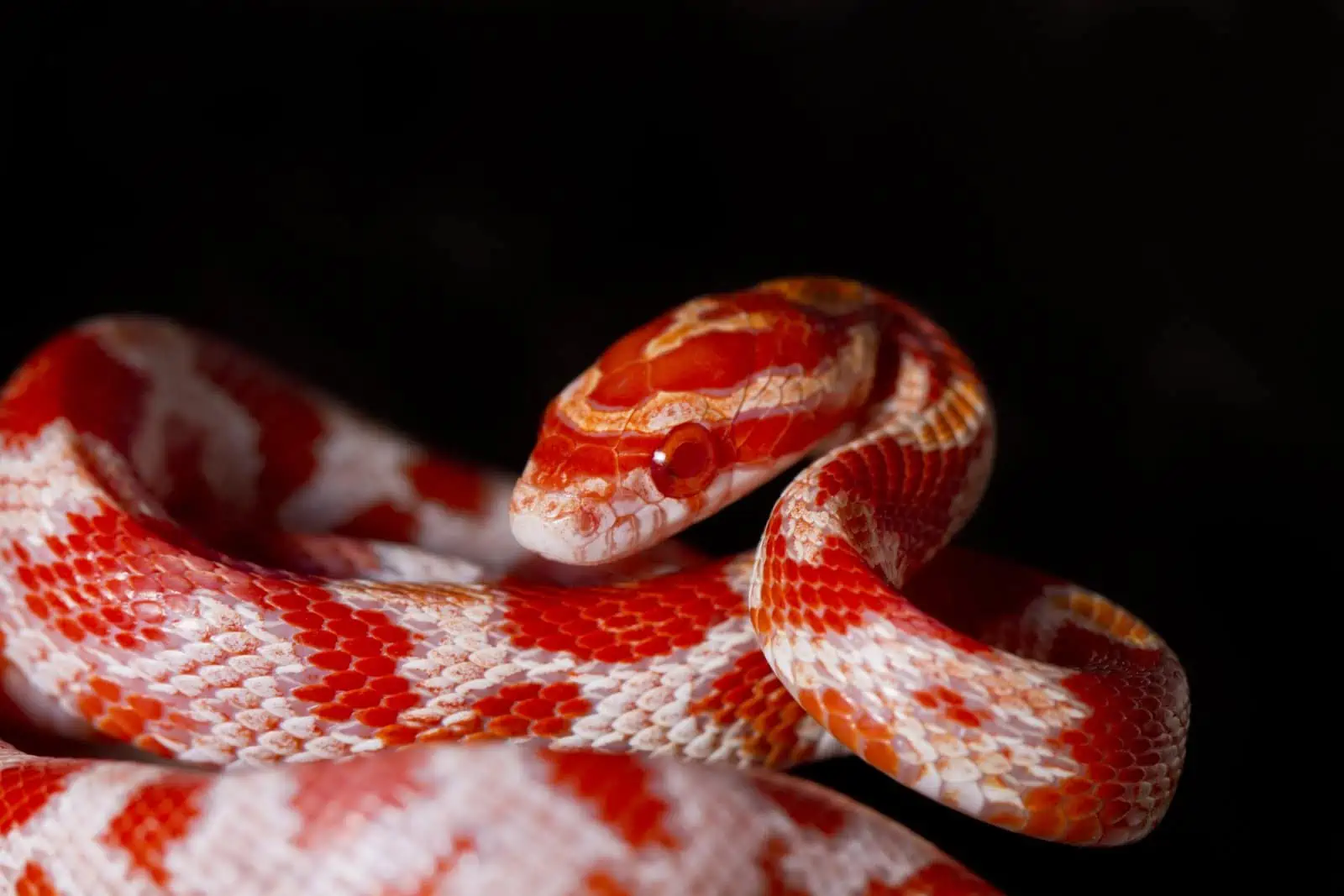
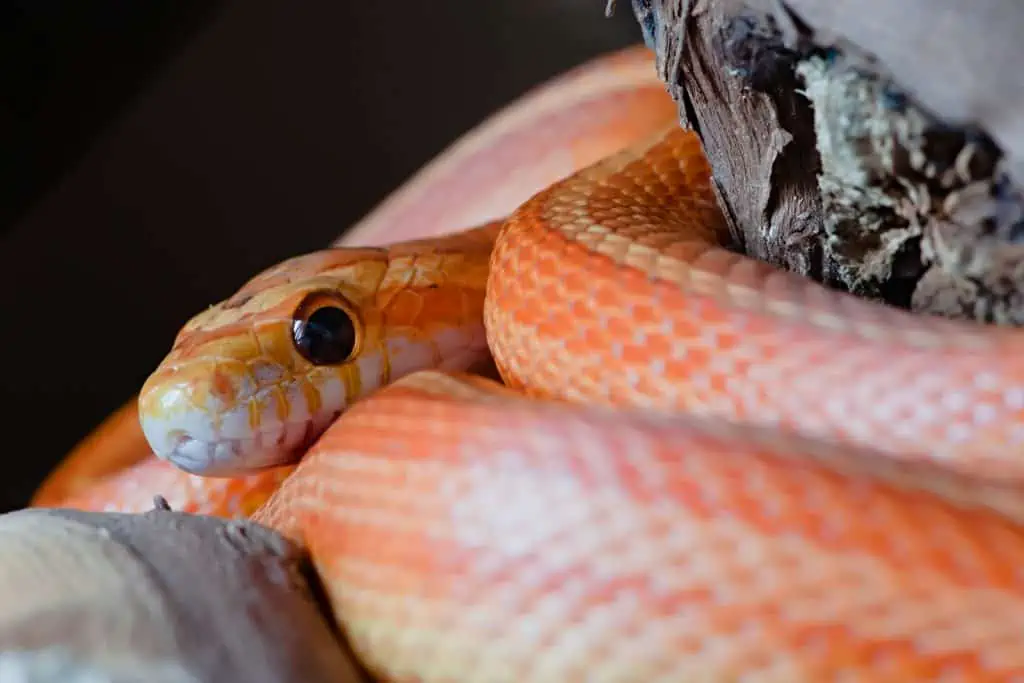
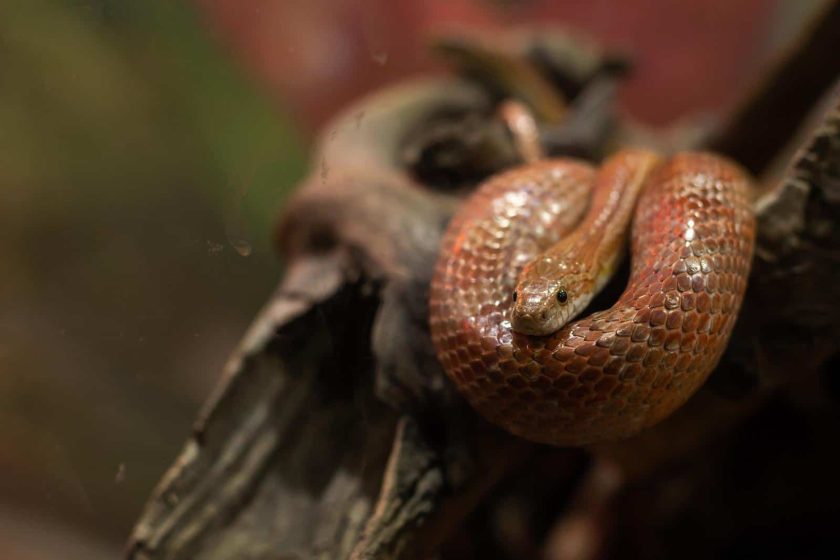
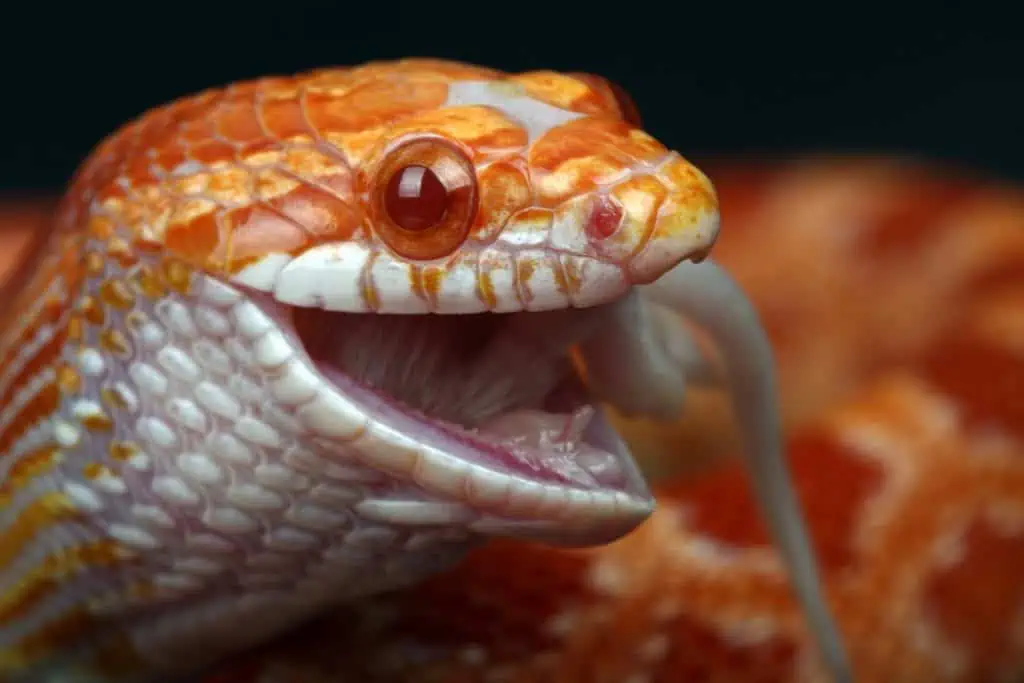
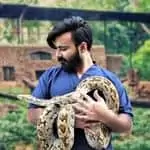
4 Comments
Hi my corn snake is 16 years and is shedding, but it’s now coming up a month and only little bits have come off. Should i go to the vet or can I run a bath with worn water to help him.
Hi Kevin,
For your 16-year-old corn snake experiencing shedding difficulties, consider the vivarium’s environment. Ensure there are appropriate surfaces for your snake to rub against, aiding in shedding. Avoid sharp edges that might harm the snake.
If environmental conditions are optimal (humidity and temp) and shedding issues persist, it could be due to health-related issues like skin infections or nutritional problems.
A warm water bath can help in the short term, but if problems continue, seeking advice from a reptile-specialized vet is recommended.
My 10 year old corn snake has not eaten for 16 weeks.
What should I do
Hi Eileen,
This is actually one of the most frequently asked questions here. Corn snakes occasionally go off feed, especially influenced by environmental factors or certain times of the year. Ensure the temperature and humidity in the enclosure are optimal. If all environmental conditions are right and there are no recent stressors, it might be a natural fasting period. However, with 16 weeks being a considerable duration, it’s wise to consult a reptile veterinarian to rule out any health concerns. Always best to get a professional’s perspective.